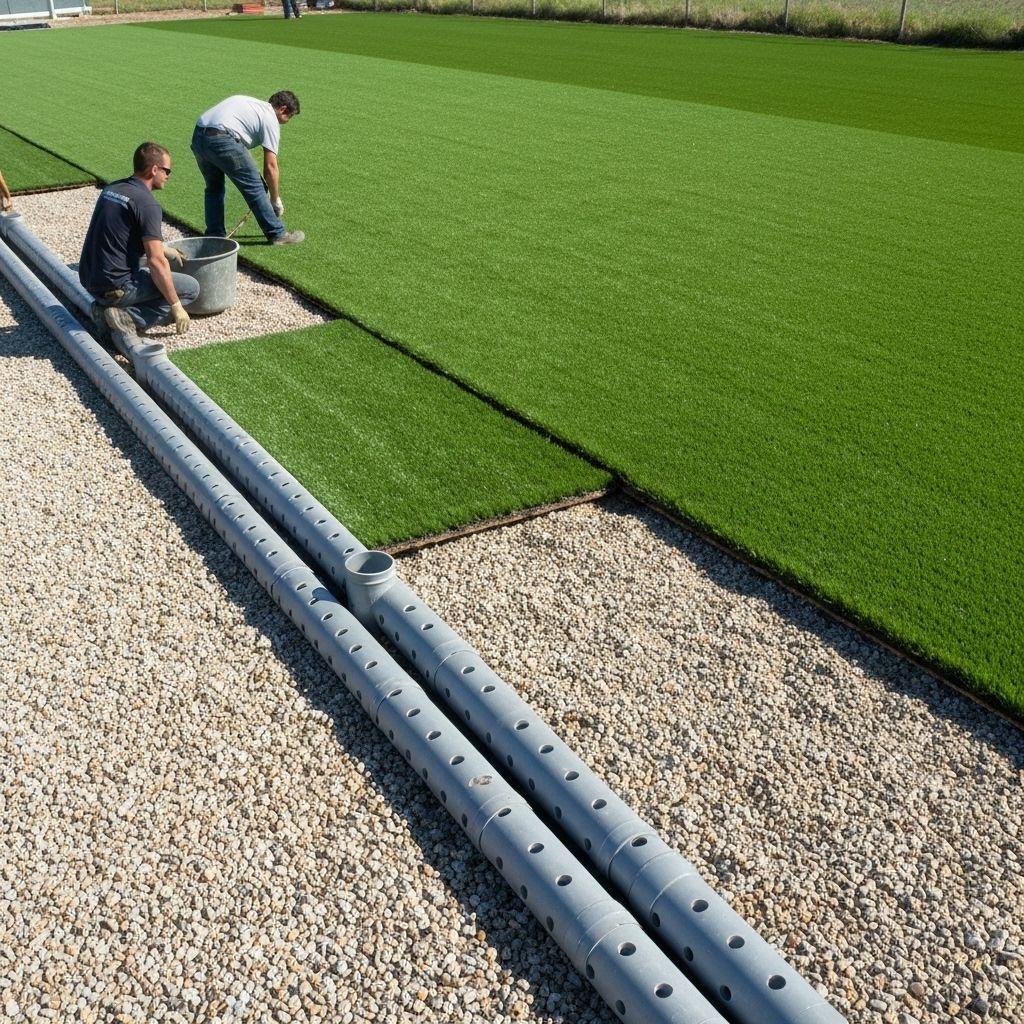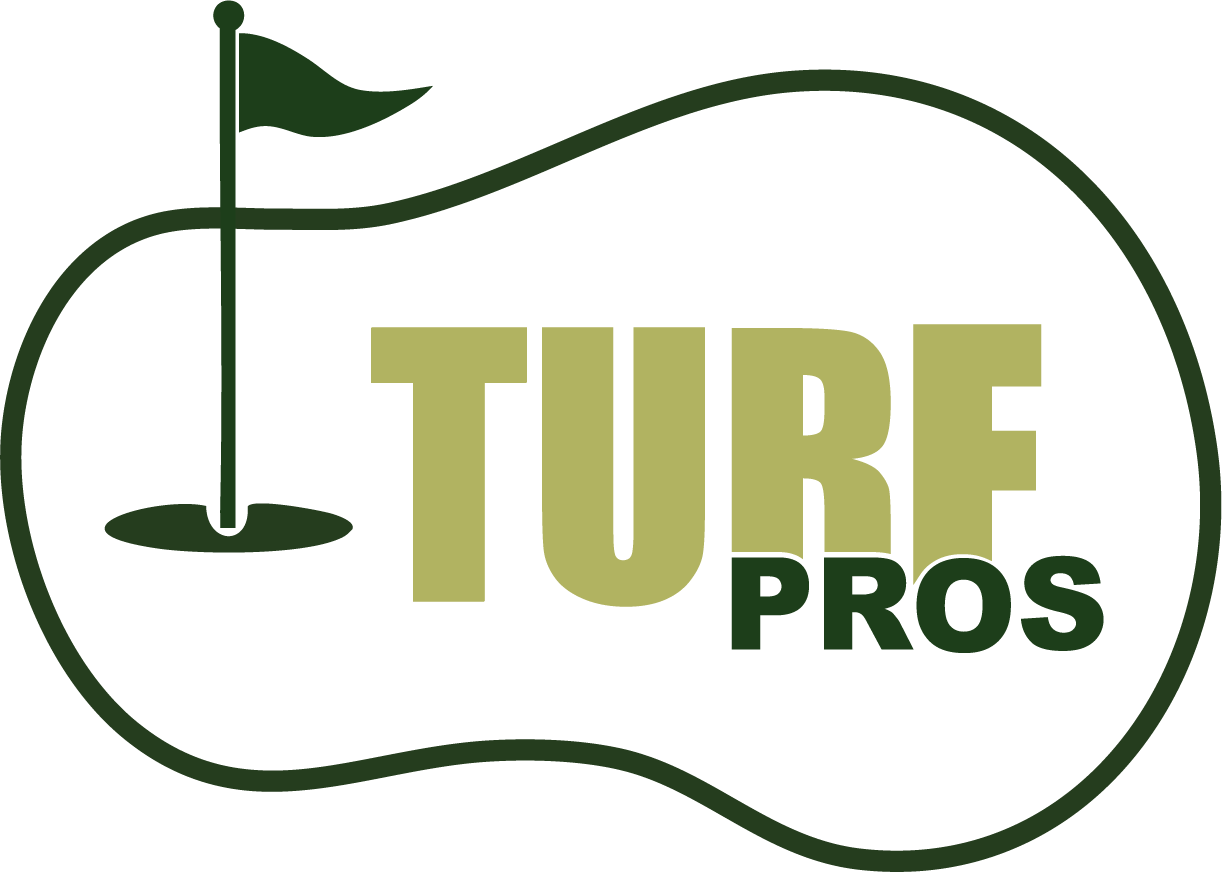Artificial Turf Drainage Systems: The Complete Guide to Preventing Water Issues in 2025

Proper drainage is the foundation of any successful artificial turf installation. Without adequate water management, even the highest-quality synthetic grass can develop problems including standing water, odors, mold growth, and premature deterioration. Understanding artificial turf drainage systems is crucial for homeowners, contractors, and property managers who want to ensure their investment performs optimally for decades.
This comprehensive guide explores every aspect of artificial turf drainage, from initial design considerations to advanced troubleshooting techniques. Whether you're planning a new installation or addressing drainage issues with existing turf, this detailed analysis will provide you with the knowledge needed to create and maintain a perfectly draining synthetic lawn system.
Understanding Artificial Turf Drainage Fundamentals
Why Drainage Matters for Artificial Turf
Unlike natural grass that can absorb and process water through its root system and soil structure, artificial turf relies entirely on engineered drainage solutions to manage water effectively. Poor drainage can lead to several serious problems:
- Standing Water: Creates unusable areas and promotes bacterial growth
- Odor Development: Stagnant water leads to unpleasant smells, especially in pet areas
- Mold and Mildew: Excessive moisture creates ideal conditions for fungal growth
- Structural Damage: Water infiltration can compromise base materials and turf backing
- Ice Formation: Poor drainage increases freeze-thaw damage in cold climates
- Reduced Lifespan: Chronic moisture issues significantly shorten turf life expectancy
Natural vs. Engineered Drainage
Effective artificial turf drainage combines natural site characteristics with engineered solutions. Understanding both components is essential for creating a comprehensive water management system.
Natural Drainage Factors:
- Soil Permeability: Existing soil's ability to absorb and transmit water
- Site Topography: Natural slopes and elevation changes that direct water flow
- Climate Patterns: Regional rainfall intensity and frequency
- Seasonal Variations: Freeze-thaw cycles and seasonal water table changes
Engineered Drainage Components:
- Permeable Base Systems: Engineered aggregate layers for water transmission
- Drainage Pipes: Perforated pipes for collecting and directing water
- Surface Grading: Precise slopes to direct surface water flow
- Edge Drainage: Perimeter systems to prevent water infiltration
Types of Artificial Turf Drainage Systems
Vertical Drainage Systems
Vertical drainage systems allow water to pass through the turf backing and base materials into the underlying soil or drainage infrastructure.
Permeable Base Layer:
The aggregate base is the primary component of vertical drainage. It's typically composed of crushed stone or decomposed granite with specific particle sizes designed to allow water to flow freely through the system.
- Material Composition: Angular crushed stone (e.g., 3/8-inch minus) provides void space for water percolation.
- Thickness: A minimum of 3-4 inches of compacted base is typically required.
- Geotextile Fabric: Placed beneath the base layer to prevent soil contamination while allowing water passage.
- Compaction: Proper compaction ensures stability without hindering drainage.
Turf Backing Permeability:
The backing of the artificial turf itself plays a crucial role in vertical drainage.
- Punched Hole Systems: Traditional turf backing with pre-drilled holes for drainage.
- Fully Permeable Backings: Modern, high-performance systems with permeable backing across the entire surface, offering superior drainage and odor control, especially for pet areas.
- Drainage Channels: Some backings are designed with integrated channels to direct water flow more efficiently.
Surface Drainage Systems
Surface drainage manages water that flows across the turf surface, directing it towards collection points or away from the installation area.
Grading and Sloping:
Proper grading is fundamental to surface drainage. The turf surface should be graded to direct water away from structures and toward designated drainage points.
- Minimum Slope: A minimum slope of 1-2% (1-2 inches per 10 feet) is recommended for effective surface drainage.
- Multi-Directional Grading: Large areas may require grading in multiple directions to prevent water accumulation.
- Edge Considerations: Proper edge grading prevents water from flowing under the turf perimeter.
Collection Points and Outlets:
Water needs a place to go. Surface drainage systems incorporate collection points and directed outlets.
- Catch Basins: Installed at low points to collect surface water and channel it into drainage pipes.
- Channel Drains: Linear drains along hardscape edges or at the base of slopes to intercept runoff.
- Daylight Outlets: Directing drainage water to natural discharge points on the property.
- Connection to Existing Systems: Tying into existing storm drains or sewer systems where permitted and feasible.
Subsurface Drainage Systems
Subsurface drainage tackles water that has infiltrated the base layer, managing it to prevent saturation and structural issues.
French Drains:
French drains are a common solution for managing subsurface water, especially in areas with poor natural drainage or high water tables.
- Components: Perforated pipes laid in a gravel-filled trench.
- Purpose: Collects groundwater and directs it away from the installation area.
- Installation: Typically installed around the perimeter of the turf or in strategic locations where water accumulation is likely.
- Spacing: Spacing depends on soil conditions and expected water volume.
Drainage Core Systems:
For particularly challenging drainage situations, specialized drainage core layers can be integrated beneath the standard base.
- Material: Made from lightweight, high-void materials like recycled plastics or gravels.
- Function: Creates an additional, highly permeable layer to accelerate water movement away from the turf.
- Application: Often used in areas with high rainfall, dense clay soils, or elevated water tables.
Drainage Design Considerations
Site Analysis
A thorough site analysis is the first step in designing an effective drainage system.
Key Factors to Evaluate:
- Soil Type: Clay soils drain slower than sandy soils. Percolation tests can quantify this.
- Topography: Natural slopes dictate water flow direction. Identify high and low points.
- Existing Drainage: Assess current storm drains, swales, and ditches.
- Hardscape Contributions: Water runoff from roofs, patios, and driveways must be managed.
- Water Table: A high water table may necessitate deeper drainage solutions.
- Climate: Local rainfall intensity and frequency are critical for system sizing.
Calculating Drainage Capacity
Proper system design requires estimating the volume of water the drainage must handle.
Factors for Calculation:
- Rainfall Intensity: Use local data for peak rainfall rates (e.g., inches per hour for a 10-year storm).
- Catchment Area: The total area contributing water to the turf system.
- Runoff Coefficient: The percentage of rainfall that becomes surface runoff (typically high for artificial turf).
- Safety Factor: Adding capacity for unusually heavy storms.
Installation Best Practices
Base Preparation
The foundation of the drainage system is the prepared subgrade and the aggregate base.
Key Steps:
- Excavation: Remove existing vegetation and topsoil to the required depth (typically 4-6 inches).
- Subgrade Compaction: Compact the native soil to prevent future settling.
- Slope Creation: Ensure the subgrade is graded to match the final surface slope.
- Geotextile Fabric: Lay a permeable fabric to separate soil from the base layer.
- Base Layer Installation: Spread and compact the aggregate base material in lifts.
- Final Grading: Achieve a smooth, precise surface with the correct slopes.
Integrating Drainage Components
Drainage elements must be correctly installed and connected.
Proper Installation:
- French Drain Placement: Ensure proper slope for water flow within the drain pipe.
- Catch Basin Installation: Set basins flush with the final surface grade for easy access and water collection.
- Pipe Connections: Securely connect drainage pipes to catch basins and outlets.
- Gravel Envelope: Ensure adequate gravel surround for subsurface drains.
- Perimeter Security: Anchor edges properly to prevent movement of base materials.
Maintenance and Troubleshooting
Regular Inspection
Routine checks are vital to catch potential drainage problems early.
What to Look For:
- Standing Water: Indicates blockages or inadequate slope.
- Slow Drainage: Suggests clogged base materials or undersized systems.
- Debris Accumulation: Leaves and dirt can clog drains and base layers.
- Surface Irregularities: Sinking or heaving can disrupt slopes.
Common Issues and Solutions
Addressing drainage problems promptly will prevent more significant issues.
Problem: Standing Water
- Cause: Clogged drains, inadequate slope, compacted base.
- Solution: Clear drains, re-grade surface if necessary, or investigate base compaction.
Problem: Odors
- Cause: Stagnant water and bacterial growth (especially in pet areas).
- Solution: Rinse thoroughly, use enzymatic cleaners, and ensure excellent drainage.
Problem: Base Saturation
- Cause: Inadequate subsurface drainage or over-compaction of base.
- Solution: Install or enhance subsurface drainage systems; consider base renovation if severely compacted.
Conclusion: Investing in a Dry and Durable Lawn
Effective drainage is paramount to the longevity and performance of any artificial turf installation. By understanding the principles of surface and subsurface water management, carefully designing the system, and adhering to best installation practices, you can ensure your synthetic lawn remains free from water-related issues.
Regular maintenance, including periodic inspections and cleaning of drainage components, is key to preserving the system's efficiency over time. Addressing potential problems proactively will prevent costly repairs and maintain the aesthetic and functional integrity of your artificial turf.
When planning your artificial turf project, prioritize drainage. It’s an investment that pays dividends in a clean, odor-free, and long-lasting synthetic lawn that performs beautifully in all weather conditions.
Need expert advice on artificial turf drainage? Contact Turf Professionals today for a site assessment and customized drainage solution. We ensure your synthetic lawn performs perfectly for years to come.
